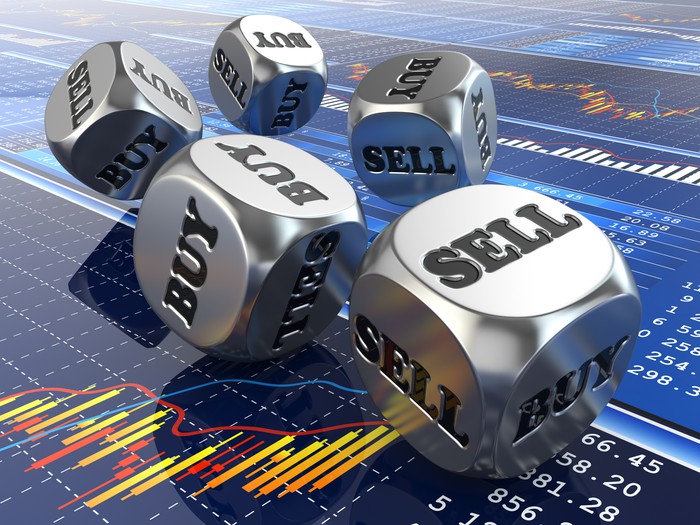Anheuser-Busch InBev (BUD +0.18%), the world's largest brewer, has lost 40% of its stock value over the past 12 months as it struggled with sluggish sales of beer, high commodity costs, and unfavorable foreign exchange rates. The COVID-19 pandemic, which shut down bars, restaurants, and other businesses, exacerbated the pain.
However, investors might be wondering if the market is too bearish on AB InBev, which sells 630 brands of beer globally -- including Budweiser, Michelob, Stella Artois, Cass, Corona, and Hoegaarden.
Let's delve deeper into the financial metrics for this beverage producer to see where its stock could be headed over the next year.

Image source: Getty Images.
Running out of room to grow
Prior to the pandemic, AB InBev faced two main challenges: Beer consumption was declining in developed markets due to concerns about calories and competition from spirits and hard seltzers, and it was running out of brands to buy and businesses to divest.
AB InBev tried to counter those headwinds with two main strategies. First, it "premiumized" its top brands with new variations and marketing campaigns, which enabled it to raise prices to offset its slower shipments. Second, it tried to attract younger drinkers, especially millennials, with new products like low-calorie Michelob Ultra and non-alcoholic beers.
AB InBev's total volumes still rose 1.1% in 2019, as its premiumization strategies boosted its revenue per hectoliter by 3.1% and its total revenue by 4.3%. That growth was led by Budweiser in the U.S., Brazil, India, and Europe; Corona in markets outside of Mexico; and Stella Artois globally.
However, its adjusted EBITDA margin contracted 65 basis points to 40.3% due to the "highest annual increase in commodity and transactional currency costs in the past decade" and "challenging macroeconomic environments." It offset that contraction with the listing of Budweiser APAC in Hong Kong last September and the divestments of its Australian businesses, and its adjusted EBITDA still rose 2.7% for the year.
How badly did the COVID-19 crisis hurt AB InBev?
AB InBev's revenue declined 12% year-over-year in the first half of 2020, as a 1.6% increase in its revenue per hectoliter failed to offset a 13.4% drop in total volumes across all its global regions. Its adjusted EBITDA dropped 24.7% year-over-year.

Image source: Getty Images.
Those declines weren't surprising, since the pandemic shut down its supply chain and many alcohol-serving businesses worldwide. But after declining 32.4% year-over-year in April and 21.4% in May, AB InBev's volumes rose 0.7% in June as its production resumed and businesses reopened.
During its latest conference call, CEO Carlos Brito said AB InBev finished the second quarter with "reinforced confidence in the resilience of our business in the global beer category." Brito also noted AB InBev focused on reducing its expenses, paying off its debt, and maintaining its premiumization strategy as its volumes and revenues declined.
AB InBev didn't provide any guidance for the rest of the year, but analysts expect its revenue and earnings to decline by 12% and 51%, respectively. Those declines suggest AB InBev won't raise its dividend, which it cut in half in April, to pre-pandemic levels anytime soon. But looking further ahead, analysts expect AB InBev's revenue and earnings to rise 8% and 61%, respectively, in fiscal 2021 -- if the pandemic passes.
Plenty of uncertainties ahead
AB InBev will easily weather the near-term headwinds, but it still faces long-term challenges. Brito, who led the company for over a decade, is expected to retire next year.
It will face pressure to justify its recent takeover of Craft Brew Alliance, which added Kona, Appalachian, Cisco, Omission, and other craft beer brands to its portfolio. Buying up craft beers doesn't guarantee instant growth: Constellation Brands (STZ +0.26%), for example, sold its craft beer brewery Ballast Point at a loss last year.
AB InBev also faces pressure to refresh its aging brands for younger drinkers, who often favor hard seltzers, spirits, and other alcoholic drinks over beers. That's why shares of Brown-Forman (BF.A 0.30%) (BF.B 0.49%), which sells spirits and wines instead of beer, rose more than 20% over the past 12 months as shares of AB InBev and Constellation declined.
AB InBev needs to accomplish all those things while reducing its net-debt-to-normalized-EBITDA ratio of 4.86 to its target ratio of 2. Reducing that debt load is a top priority -- that's why AB InBev's management and analysts mentioned "deleveraging" over a dozen times throughout its latest conference call.
Where will AB InBev's stock be in a year?
AB InBev's business might stabilize over the next few quarters, but its stock could underperform the S&P 500 over the next 12 months as it struggles to expand its core beer brands, hike prices during an economic downturn, and reduce its debt. That's why the stock still doesn't seem cheap at 16 times forward earnings.






